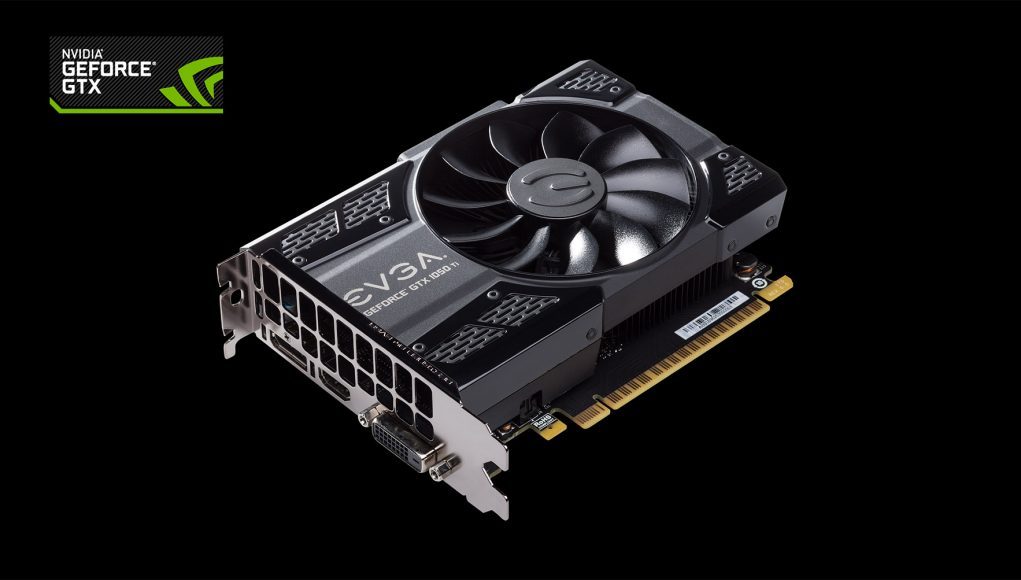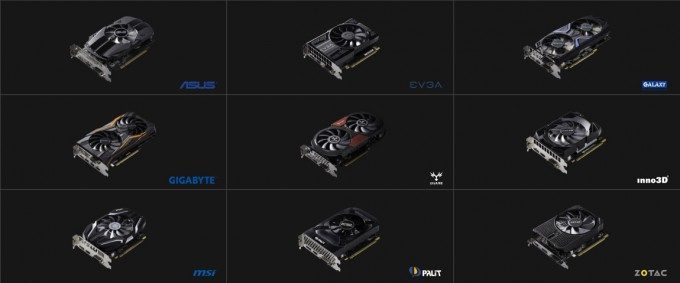Following the launch of the more powerful GTX 1060, 1070, and 1080, NVIDIA revealed the latest in their low-end GeForce GPUs, the GTX 1050 and 1050 Ti in October 2016. While not the first in line for a premium VR experience, the more powerful 1050 Ti now officially meets the Oculus Minimum Specification.
Update (4/9/17, 1:27PM PT): Oculus has officially updated its Minimum Specs to include the GTX 1050 Ti alongside the RX 470. As of this update, the Oculus Minimum Spec according to the company’s Support Center is as follows:
Graphics Card NVIDIA GTX 1050 Ti / AMD Radeon RX 470 or greater Alternative Graphics Card NVIDIA GTX 960 / AMD Radeon R9 290 or greater CPU Intel i3-6100 / AMD FX4350 or greater Memory 8GB+ RAM Video Output Compatible HDMI 1.3 video output USB Ports 1x USB 3.0 port, plus 2x USB 2.0 ports OS Windows 8.1 or newer This change replaces the more expensive GTX 1060 GPU which was previously listed as the least powerful NVIDIA GPU that would meet the Oculus Minimum Spec.
Note that the ‘Oculus Minimum Spec’ is separate and lower than the ‘Oculus Recommended Spec’, thanks to the use of ASW rendering technology which is at this stage proprietary to Oculus. That means that the GTX 1050 Ti will work for the Rift but does not meet the recommended specifications set by Valve/HTC for the Vive (which are instead in line with the Oculus Recommended Spec).
Original Article (10/18/16): Earlier this month at the company’s developer conference, Oculus announced a new VR rendering technology called Asynchronous Spacewarp (ASW). The tech, which enables reprojection for positional movement of the headset, reduces frame rendering from 90 FPS to 45 FPS while creating new synthetic frames between each of those frames. The end result is a VR game that renders at 45 FPS, but displays through the headset at 90 FPS.
This greatly reduces the computing power needed to ensure a comfortable, stutter free VR experience, Oculus says, so much so that they announced a new, lower set of “Minimum Specifications” to accompany their “Recommended Specifications.” While the Recommended Specification calls for an ‘NVIDIA GTX 970 / AMD R9 290 equivalent or greater’ GPU, the Minimum Specification drops things down to an ‘NVIDIA GTX 960 or greater’.
While Nvidia’s new $109 GTX 1050 is definitely out of the running, the $139 GTX 1050 Ti might just make the grade. The company confirmed to Road to VR that the 1050 Ti is undergoing evaluation internally and with Oculus to ensure that it has the power needed to meet the Minimum Specification.
“We expect that the [GTX 1050] Ti will meet [Oculus’ minimum] requirement,” said an Nvidia spokesperson who further added that the company recommends the more powerful GTX 1060 (which meets the Recommended Spec) for “native 90 FPS gameplay” which wouldn’t rely on Oculus’ Asynchronous Spacewarp. Oculus too, when introducing ASW, said that there’s “no replacement for native 90 FPS VR.”
While Nvidia expects the GTX 1050 Ti to meet the Oculus Minimum Specification, it’s important to note that Steam doesn’t yet have an equivalent to ASW rendering and still recommends a GTX 970 or Radeon R9 290 or better for the HTC Vive.
The GTX 1050 Ti is priced at $139 with a release date of October 25th and will be available from Nvidia’s hardware partners. The company doesn’t plan to launch a Founder’s Edition of the GPU as it has done with other 10-series cards.
Nvidia GeForce GTX 1050 Ti Specs
| Graphics Processing Clusters | 2 |
| Streaming Multiprocessors | 6 |
| CUDA Cores (single precision) | 768 |
| Texture Units | 48 |
| ROP Units | 32 |
| Base Clock | 1290 MHz |
| Boost Clock | 1392 MHz |
| Memory Clock | 3504 Mhz |
| Memory Data Rate | 7 Gbps |
| L2 Cahce Size | 1024K |
| Total Video Memory | 4096 MB GDDR5 |
| Memory Interface | 128-bit |
| Total Memory Bandwidth | 112 GB/s |
| Texture Rate (Bilinear) | 61.9 GigaTexels/sec |
| Fabrication Process | 14 nm |
| Transistor Count | 3.3 billion |
| Connectors | 1x DisplayPort, 1x HDMI, 1x Dual-link DVI |
| Form Factor | Dual Slot |
| Power Connectors | None |
| Recommended Power Supply | 300 Watts |
| Thermal Design Power (TDP) | 75 Watts |
| Thermal Threshold | 97 degrees C |








